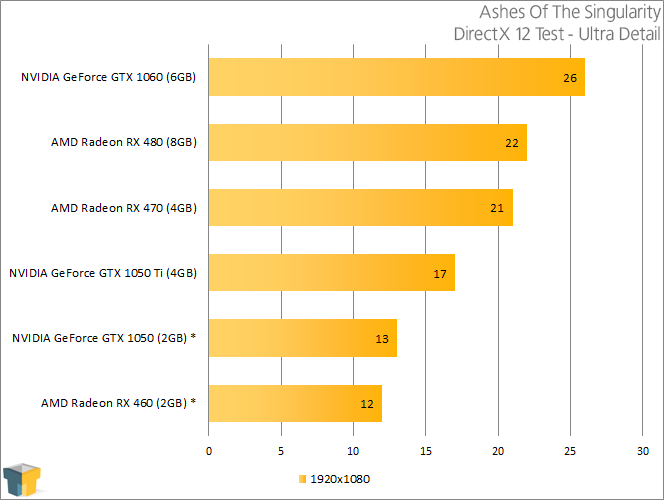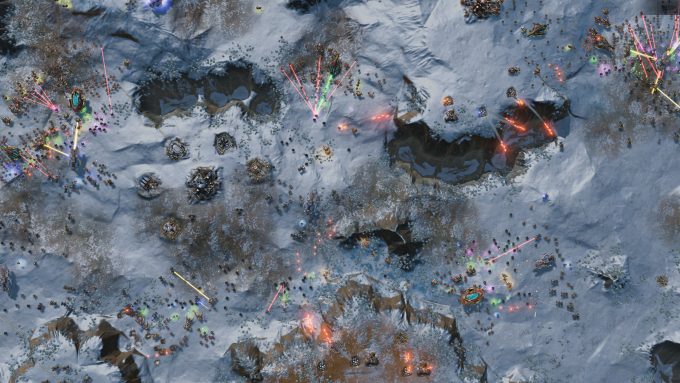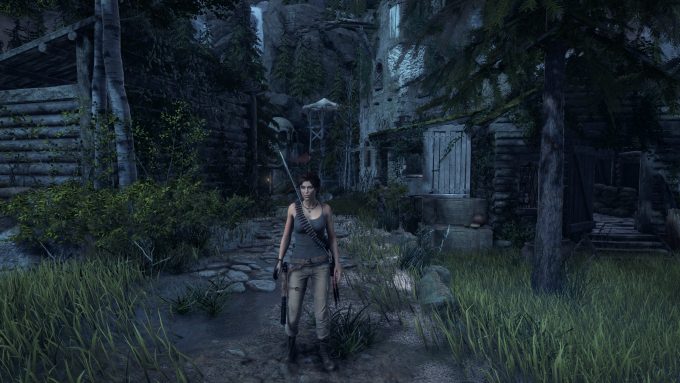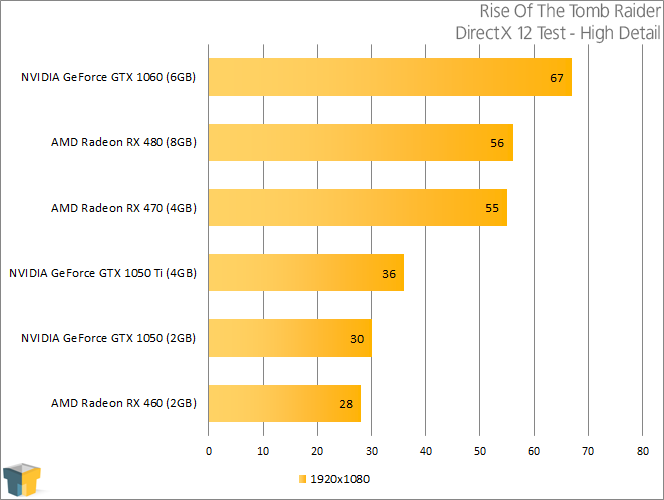- Qualcomm Launches Snapdragon 4 Gen 2 Mobile Platform
- AMD Launches Ryzen PRO 7000 Series Mobile & Desktop Platform
- Intel Launches Sleek Single-Slot Arc Pro A60 Workstation Graphics Card
- NVIDIA Announces Latest Ada Lovelace Additions: GeForce RTX 4060 Ti & RTX 4060
- Maxon Redshift With AMD Radeon GPU Rendering Support Now Available
Sub-$150 Pascal: NVIDIA GeForce GTX 1050 & GTX 1050 Ti Review

Since the first Pascal release this past spring, NVIDIA has rolled-out a handful of high-end (and really high-end) GPUs, so now, it’s time to get the low-end settled. That’s fulfilled with the release of the GeForce GTX 1050 and GTX 1050 Ti – both 75W parts. Priced at $109 and $139, respectively, both cards target the 1080p resolution. Let’s see how they fare against each other, and AMD’s Radeon RX 460.
Page 6 – DirectX 12: Ashes & RotTR
DirectX 12 Testing
Considering the fact that we’ve been hearing about DirectX 12 for what feels like forever, it’s a little surprising that the number of DX12 titles out there remain few. Heck, one such game was Fable Legends, and that was shut down a few months ago. We’re definitely in the middle of a waiting game for more DX12 titles to get here, but thankfully, those that do exist now prove great for testing.
Of all the DirectX 12 games out there, Ashes of the Singularity takes the best advantage of its low-level API capabilities. As a strategy game, there could be an enormous number of AI bots on the screen at once, and in those cases, both the CPU and GPU can be used for computation.
I should be clear about one thing: low-level graphics APIs are designed to benefit low-end hardware better, but when we’re dealing with GPUs that cost hundreds of dollars, that rules that kind of test useless. For that reason, I’ve chosen to benchmark these three games as normal; the results might not be specific to low-level DX12 enhancements, but they’re still fair for comparisons against other high-end graphics cards.

Due to some irregularities, I had to scrap our Hitman test, and I almost came close to scrapping Ashes, as well. Simply put, 2GB framebuffers are not ideal. Due to their small size, Ashes forced itself to run at settings lower than what we normally use, but both the RX 460 and GTX 1050 defaulted to the exact same configuration. The 1050 Ti, with its beefier framebuffer, was able to run at the same settings as the higher-end cards.
That all said, we’re getting under 20 FPS for each card, so the results are pretty useless overall. DirectX 12 at Ultra detail is not suitable for anything but a high-end GPU.
So, how about Rise Of The Tomb Raider?
I am surprised that RotTR ran so well given the hassles Ashes gave me. At high detail, all of the cards hovered around the 30 FPS mark, with the 1050 Ti reigning supreme at 36 FPS. What’s interesting about this is that during our manual real-world run of this game in DX11 mode, AMD’s RX 460 struggled hard – it fell 9 FPS short of the GTX 1050. It fares a lot better with the DX12 benchmark, doubling its framerate.
Support our efforts! With ad revenue at an all-time low for written websites, we're relying more than ever on reader support to help us continue putting so much effort into this type of content. You can support us by becoming a Patron, or by using our Amazon shopping affiliate links listed through our articles. Thanks for your support!








